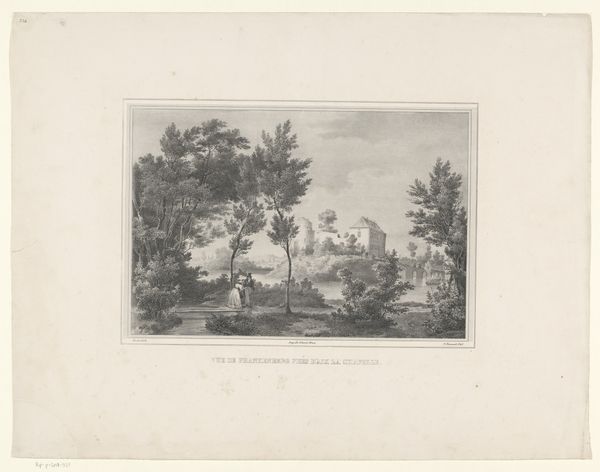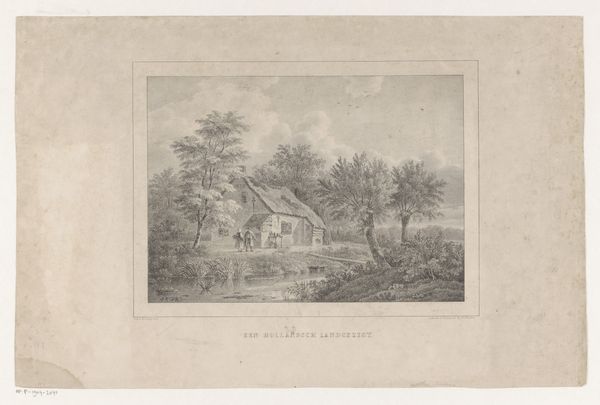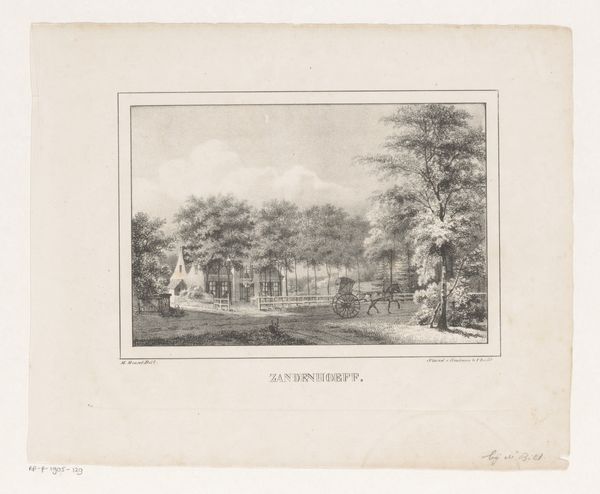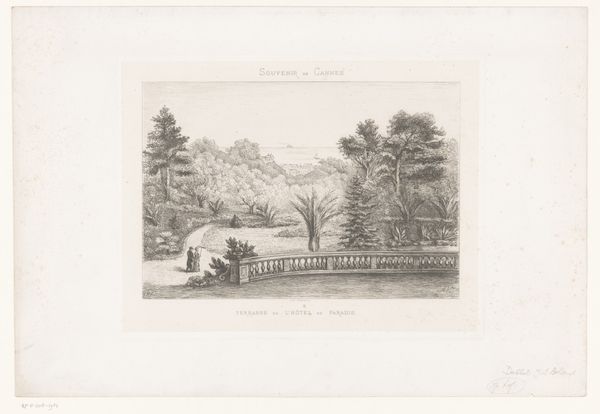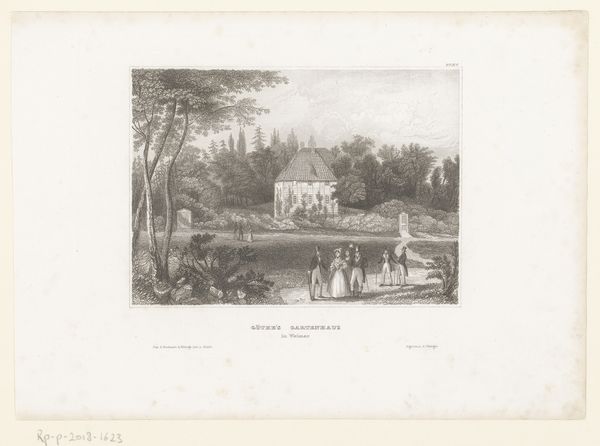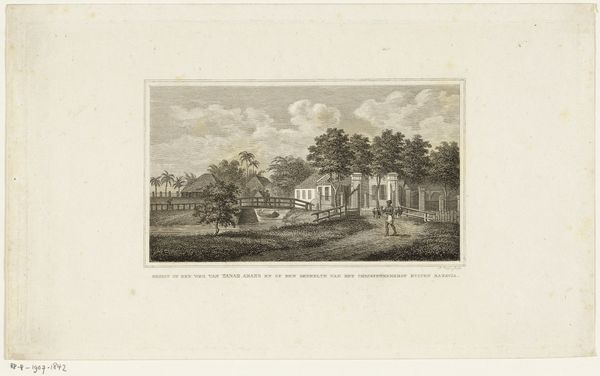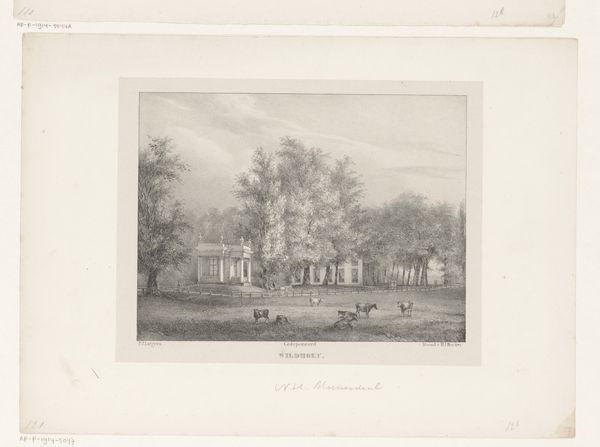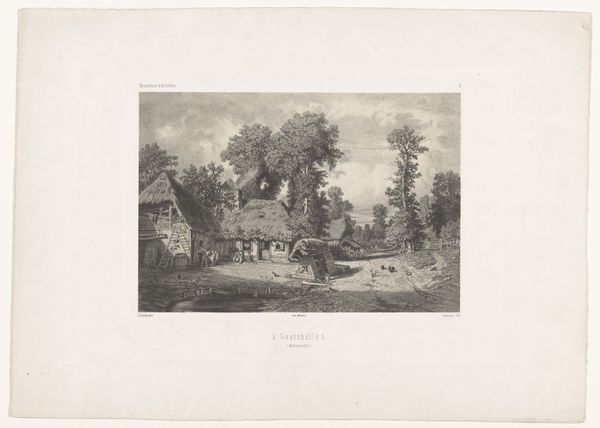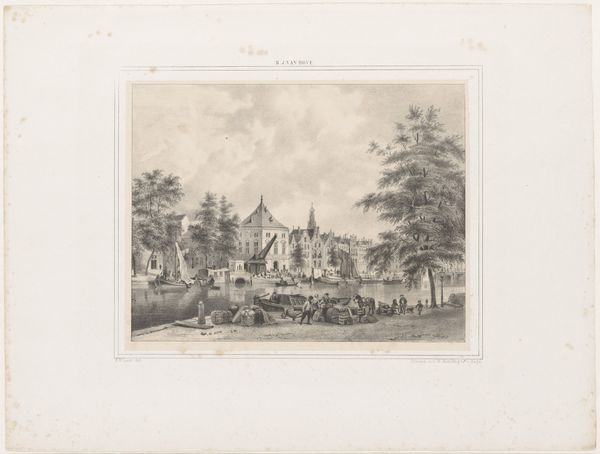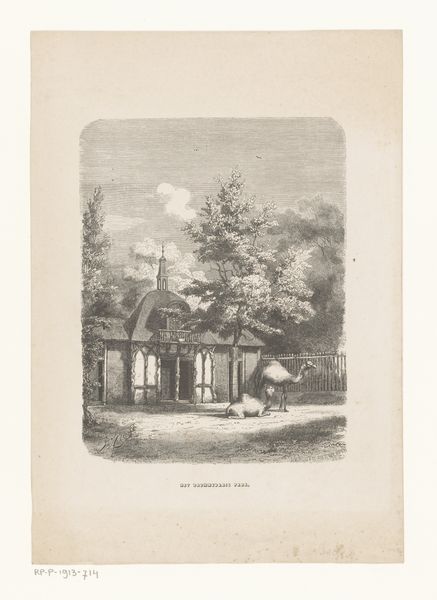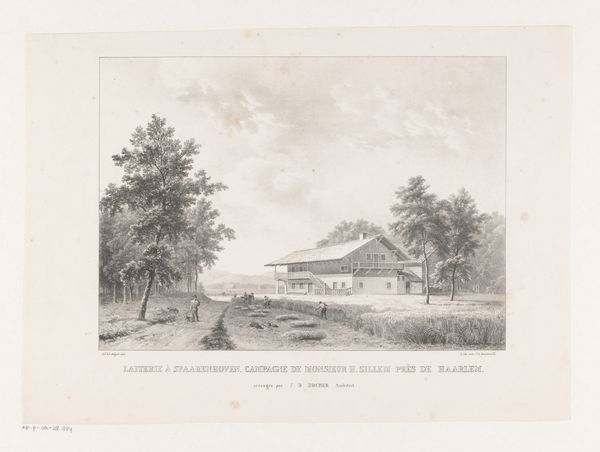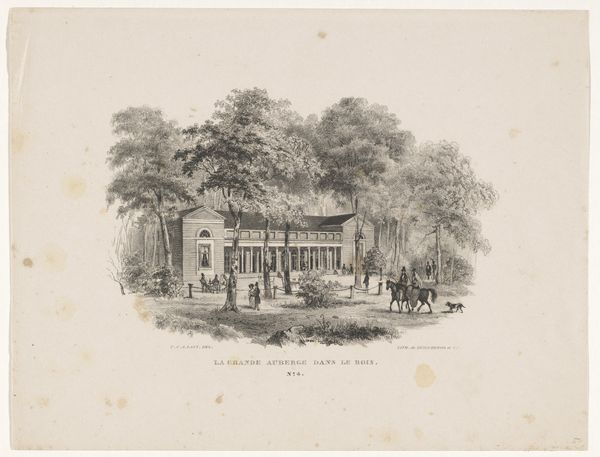
print, engraving
#
neoclassicism
# print
#
landscape
#
line
#
cityscape
#
engraving
#
realism
Dimensions: height 475 mm, width 621 mm
Copyright: Rijks Museum: Open Domain
Curator: This engraving, created around 1829, depicts the grounds of the former Ketschenburg Castle near Aachen, by Jean Nicolas Ponsart. Editor: It’s incredibly detailed; the lines are so fine! The overall tone feels quite serene, like a meticulously ordered pastoral scene. Curator: Absolutely. Ponsart created this during a period of renewed interest in historical sites and picturesque landscapes. Prints like this were popular souvenirs and contributed to a growing sense of regional identity and tourism. Editor: You can tell a lot about the socio-economic aspects of the locale simply from observing the way the animals and laborers are portrayed in conjunction with the buildings in the shot. The choice of medium -- engraving, especially -- suggests this piece could have been intended to be easily and cheaply mass produced to reach a wider audience. Curator: That's right. Consider the rise of the middle class in the 19th century and their aspirations for cultured leisure. Prints like this became affordable symbols of refinement, accessible to a broader audience. It promoted and catered to the market and public roles of historical imagery. Editor: And, looking at the technique itself, the skill required to achieve this level of detail through engraving is impressive. The artist carefully balances light and shadow with precision, drawing our eyes to the central castle. Curator: The attention to detail in the architecture reflects the influence of neoclassicism on the European landscape and highlights its cultural significance. Editor: Even though the perspective is from a distance, you can see all sorts of goings-on happening here -- suggesting daily life amidst such grand architecture. Curator: A valuable glimpse into a past shaped by shifting tastes and emerging technologies. Editor: Yes, I come away from this wondering more about who owned this print, how frequently it changed hands, and whether this particular image held significance or purely represented the broader allure of architectural landscape.
Comments
No comments
Be the first to comment and join the conversation on the ultimate creative platform.
